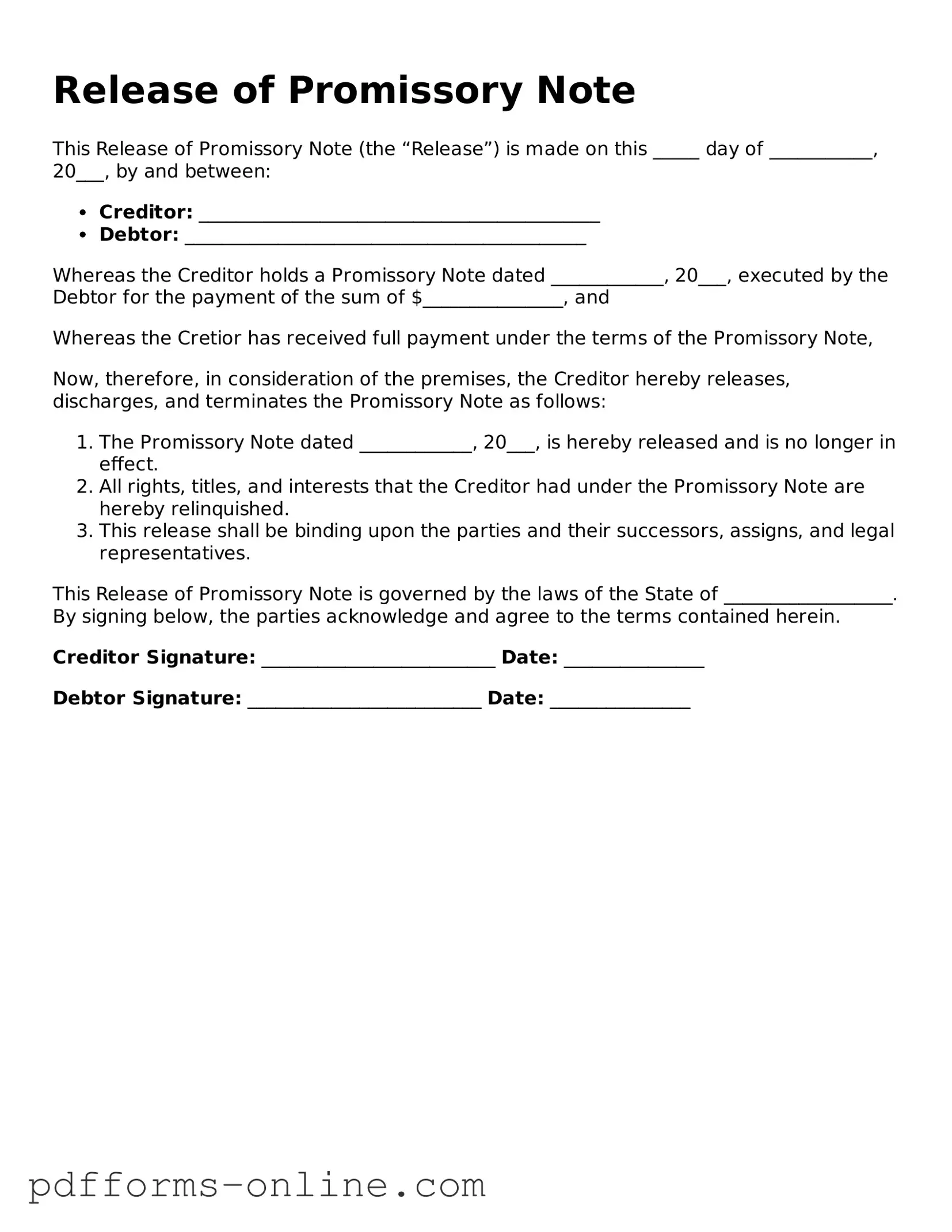Release of Promissory Note
This Release of Promissory Note (the “Release”) is made on this _____ day of ___________, 20___, by and between:
- Creditor: ___________________________________________
- Debtor: ___________________________________________
Whereas the Creditor holds a Promissory Note dated ____________, 20___, executed by the Debtor for the payment of the sum of $_______________, and
Whereas the Cretior has received full payment under the terms of the Promissory Note,
Now, therefore, in consideration of the premises, the Creditor hereby releases, discharges, and terminates the Promissory Note as follows:
- The Promissory Note dated ____________, 20___, is hereby released and is no longer in effect.
- All rights, titles, and interests that the Creditor had under the Promissory Note are hereby relinquished.
- This release shall be binding upon the parties and their successors, assigns, and legal representatives.
This Release of Promissory Note is governed by the laws of the State of __________________. By signing below, the parties acknowledge and agree to the terms contained herein.
Creditor Signature: _________________________ Date: _______________
Debtor Signature: _________________________ Date: _______________
